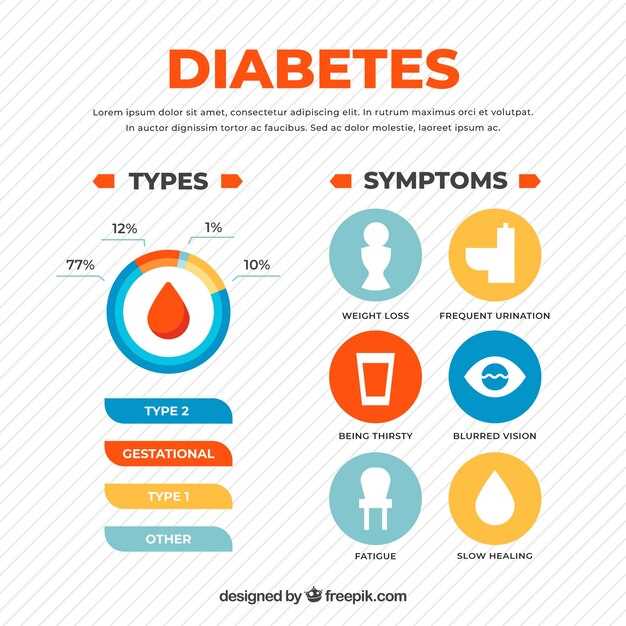
Metformin and Glucotrol are two common medications used to treat type 2 diabetes. While both medications help control blood sugar levels, they work in different ways.
Metformin is a biguanide medication that works by decreasing the amount of glucose produced by the liver and increasing the sensitivity of muscle cells to insulin, allowing for better uptake of glucose.
Glucotrol is a sulfonylurea medication that works by stimulating the pancreas to release more insulin, which helps lower blood sugar levels.
While both medications are effective at treating type 2 diabetes, Metformin is usually recommended as a first-line treatment due to its lower risk of causing low blood sugar levels (hypoglycemia) compared to Glucotrol.
How do metformin and glucotrol work?
Metformin and Glucotrol are two popular medications used in the treatment of type 2 diabetes. They work in different ways to help control blood sugar levels.
Metformin works by decreasing the amount of sugar produced by the liver and increasing the sensitivity of muscle cells to insulin. This helps to lower blood sugar levels and improve insulin sensitivity.
Glucotrol, on the other hand, belongs to a class of medications called sulfonylureas. It works by stimulating the pancreas to release more insulin, which helps to lower blood sugar levels.
Both metformin and Glucotrol can be effective in controlling blood sugar levels, but they work through different mechanisms. It is important to talk to your healthcare provider to determine which medication is right for you based on your individual needs and health conditions.
How do metformin and glucotrol work?
Metformin and Glucotrol are medications used to treat type 2 diabetes by helping to control blood sugar levels. Here’s how they work:
| Metformin | Glucotrol |
| Metformin works by decreasing the amount of sugar produced by the liver and increasing the sensitivity of muscle cells to insulin. This helps to lower blood sugar levels and improve the body’s use of glucose for energy. | Glucotrol works by stimulating the release of insulin from the pancreas, which helps lower blood sugar levels by facilitating the uptake of glucose by cells in the body. |
| Metformin does not increase insulin levels in the body but instead works to improve insulin sensitivity. It also helps to lower triglyceride levels and may promote weight loss in some individuals. | Glucotrol can cause the pancreas to release more insulin, which can lead to weight gain and a higher risk of low blood sugar levels (hypoglycemia) if not taken as directed. |
It’s important to follow your healthcare provider’s instructions when taking these medications and monitor your blood sugar levels regularly to ensure they are working effectively for you.
Side effects of metformin and glucotrol
Metformin and Glucotrol are both effective medications for managing diabetes, but they come with potential side effects that users should be aware of.
Side effects of Metformin

Common side effects of metformin include:
| 1. Gastrointestinal issues such as diarrhea, nausea, and stomach upset |
| 2. Metal taste in the mouth |
| 3. Risk of vitamin B12 deficiency |
Side effects of Glucotrol

Common side effects of Glucotrol may include:
| 1. Hypoglycemia (low blood sugar) |
| 2. Weight gain |
| 3. Skin reactions such as rash or itching |
It is important to consult with a healthcare provider before starting any new medication and to report any side effects experienced while taking metformin or Glucotrol.
Who should use metformin or glucotrol?
Metformin and Glucotrol are commonly prescribed medications for managing type 2 diabetes. They are recommended for individuals with high blood sugar levels who are unable to control their condition through diet and exercise alone.
Metformin is often the first-line treatment for type 2 diabetes and is suitable for people who are overweight or obese. It works by decreasing glucose production in the liver and improving insulin sensitivity in the body.
Glucotrol, on the other hand, belongs to a class of medications called sulfonylureas and helps the pancreas release more insulin to lower blood sugar levels. It is usually prescribed for individuals who cannot tolerate metformin or for whom metformin is ineffective.
It is important to consult with a healthcare provider to determine the most appropriate medication based on individual health conditions, medical history, and treatment goals.
Cost comparison between metformin and glucotrol
When it comes to the cost comparison between metformin and glucotrol, it’s essential to consider the financial aspect of diabetes management. Metformin is known for its affordability and widespread availability, making it a cost-effective option for many patients. On the other hand, Glucotrol, a brand-name medication, tends to be more expensive due to its proprietary nature.
Typically, metformin is available in both generic and brand-name forms, offering patients flexibility in choosing a more budget-friendly option. In contrast, Glucotrol is a brand-name medication, which often leads to higher costs compared to generic alternatives.
Factors influencing cost:
- Insurance coverage: Check your insurance plan to see if it covers metformin or Glucotrol.
- Pharmacy discounts: Some pharmacies offer discounts or savings programs for prescription medications.
- Generic vs. brand-name: Opting for generic metformin can help save costs compared to brand-name Glucotrol.
Ultimately, the cost comparison between metformin and Glucotrol may vary depending on individual circumstances, such as insurance coverage, pharmacy pricing, and the preference for generic or brand-name medications. Consulting with a healthcare provider or pharmacist can help you make an informed decision based on both the effectiveness and affordability of these diabetes medications.
